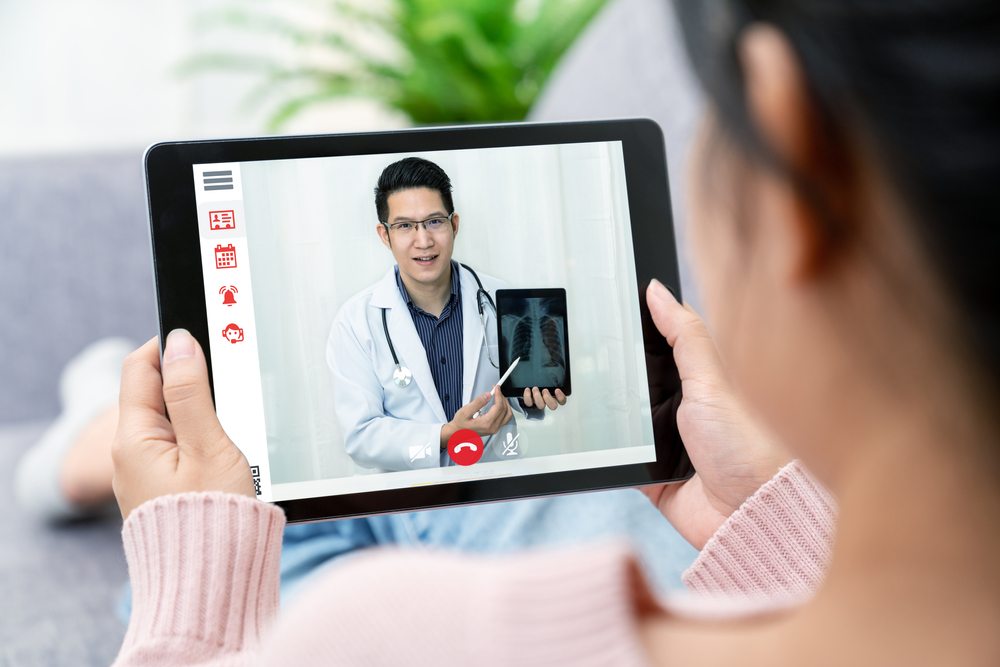Digital health refers to using technology to improve health outcomes and healthcare delivery. It involves the application of digital technologies, such as mobile apps, wearable devices, telemedicine, artificial intelligence, and electronic health records, to support and enhance health and wellness.
Digital health enables patients to monitor and manage their health remotely, and healthcare providers to access and analyse patient data in real-time, leading to better diagnosis, treatment, and disease management. It also facilitates communication and collaboration between healthcare professionals, patients, and caregivers, improving the overall quality and efficiency of healthcare.
Reducing the cost of healthcare
Digital health tools, such as Telehealth or Telemedicine, refer to the use of technology to provide healthcare services remotely. These tools provide a convenient platform for patient-physician interaction, which has many benefits, including reducing the cost of healthcare.
One of the primary ways that digital health tools cut down on the cost of healthcare is by reducing transport costs for doctor visits. In many cases, patients have to travel long distances to visit a doctor or hospital, which can be expensive and time-consuming. With digital health tools, patients can access healthcare services from the comfort of their own homes, eliminating the need to travel long distances.
Another way digital health tools cut down on the cost of healthcare is by eliminating hospital room expenses. Hospital stays can be expensive, and many patients are forced to stay in the hospital for extended periods of time due to their medical conditions. With digital health tools, doctors can monitor and treat patients remotely, reducing the need for extended hospital stays.
Overall, digital health tools offer a cost-effective way to deliver healthcare services, and they are becoming increasingly popular among patients and healthcare providers alike. By reducing the need for in-person visits and hospital stays, digital health tools can help to make healthcare more accessible and affordable for everyone.
Personalised Healthcare
Personal digital devices have revolutionized the way healthcare is delivered by enabling remote and non-invasive health assessments and disease monitoring. These devices offer patients a convenient way to track their health status and manage chronic conditions from the comfort of their own homes.
One of the most common types of personal digital devices used for remote health monitoring is the continuous glucose monitor. These devices use a small sensor placed under the skin to monitor blood glucose levels continuously, which is particularly important for people with diabetes who need to keep their blood sugar levels within a specific range. Continuous glucose monitors can provide real-time information about glucose levels, alerting patients to potential problems and allowing them to make adjustments to their diet and medication accordingly.
Smart rings and watches are another type of personal digital device that can be used for remote health monitoring. These devices can track a range of health metrics, including heart rate, sleep quality, and physical activity levels. They can also monitor stress levels and provide reminders to take medication or exercise regularly. Smart rings and watches can provide patients with personalized feedback on their health status and help them make informed decisions about their health.
Fitness trackers are another commonly used digital device for health monitoring. These devices can track a range of fitness-related metrics, including steps taken, calories burned, and distance travelled. They can also monitor heart rate and sleep quality, providing patients with valuable insights into their overall health and wellness.
Overall, personal digital devices offer a convenient and non-invasive way to monitor health status and manage chronic conditions. As technology continues to advance, we can expect to see even more innovative digital health tools emerge, further transforming the way healthcare is delivered and making it more accessible and convenient for patients.
Enhance access to healthcare groups
Digital health platforms offer patients experiencing similar health issues a platform to access a community for moral and emotional support. These platforms are designed to provide patients with a safe and supportive environment where they can share their experiences, connect with others who understand their struggles, and receive emotional support and encouragement.
One of the key benefits of digital health platforms is that they can help to alleviate feelings of isolation and loneliness that many patients experience when dealing with chronic or serious health conditions. By connecting patients with others who are going through similar challenges, these platforms can provide a sense of community and belonging that can be incredibly beneficial for mental and emotional well-being.
In addition to providing emotional support, digital health platforms can also offer practical advice and information to patients. Many of these platforms are moderated by healthcare professionals or peer advocates who can provide guidance and resources to help patients manage their conditions effectively.
Digital health platforms are also a convenient way for patients to access information and resources related to their health conditions. Patients can access articles, videos, and other resources that can help them understand their condition better, manage their symptoms, and make informed decisions about their healthcare.
Improved quality of care
Digital health devices provide physicians with a powerful tool for monitoring patients closely and providing medical intervention without requiring patients to be in the hospital. These devices allow doctors to remotely monitor patient health status, receive real-time data on vital signs and symptoms, and intervene quickly if necessary.
One of the primary benefits of digital health devices is that they allow physicians to monitor patients continuously, even when they are not in the hospital. This is particularly important for patients with chronic conditions or those who are recovering from surgery or illness. By monitoring patients closely, physicians can detect potential problems early and intervene quickly, reducing the risk of complications and improving patient outcomes.
Digital health devices can also help to reduce the burden on hospitals and healthcare facilities. By providing remote monitoring and intervention, physicians can reduce the number of in-person visits required and ensure that patients receive the care they need without having to be admitted to the hospital. This can help to free up hospital beds and resources, making healthcare more efficient and cost-effective.
Another benefit of digital health devices is that they can improve patient outcomes by providing personalized care and interventions. Physicians can use data collected by these devices to tailor treatment plans to individual patient needs, ensuring that patients receive the right care at the right time. This can lead to improved patient outcomes and a better quality of life for patients.
3 Common Digital Health Tools
Telemedicine and Telehealth
Telemedicine and telehealth refer to the use of digital technologies, such as video conferencing, remote monitoring, and mobile health apps, to deliver healthcare services and information to patients remotely.
Telemedicine typically involves real-time video consultations between patients and healthcare providers, allowing patients to receive medical advice, diagnosis, and treatment without having to visit a healthcare facility in person. Telemedicine can be particularly beneficial for patients who live in remote or underserved areas, who have difficulty travelling to healthcare facilities, or who have mobility issues that make in-person visits challenging.
Telehealth, on the other hand, refers to a broader range of digital health technologies and services that can be used to promote health and wellness, as well as to diagnose, treat, and manage health conditions remotely. Telehealth can include remote monitoring of patient’s vital signs, mobile health apps that allow patients to track their health status and receive personalized recommendations, and online portals that provide patients with access to health information, resources, and support.
Both telemedicine and telehealth are increasingly being used to improve access to healthcare, reduce costs, and improve patient outcomes.
Wearable Devices
Wearable devices are electronic devices that are designed to be worn on the body, typically on the wrist, fingers, or other parts of the body. These devices are equipped with sensors and other electronic components that can track various aspects of the wearer’s health and activity levels.
Common examples of wearable devices include smartwatches, fitness trackers, and health monitoring devices. Smartwatches typically include a range of features such as heart rate monitoring, step tracking, and GPS tracking, as well as the ability to receive notifications and make phone calls.
Fitness trackers, on the other hand, are specifically designed to track physical activity levels, such as the number of steps taken, distance travelled, and calories burned. They may also include additional features such as heart rate monitoring, sleep tracking, and water resistance.
Health monitoring devices, such as continuous glucose monitors or blood pressure monitors, are designed to monitor specific health conditions continuously, providing patients with real-time data and alerts if their health status changes.
Wearable devices have become increasingly popular in recent years, as they allow users to track their health and activity levels conveniently and continuously. These devices can provide valuable insights into users’ health status, helping them to make more informed decisions about their lifestyle and healthcare.
Online Patient Portals
Online patient portals are secure websites that allow patients to access their personal health information, communicate with their healthcare providers, and manage their healthcare needs electronically. These portals are typically provided by healthcare organizations, such as hospitals or clinics, and are designed to give patients convenient access to their medical information from anywhere with an internet connection.
Some of the key features of online patient portals may include:
- Access to personal health records: Patients can view their medical history, test results, medication lists, and other important health information.
- Secure messaging with healthcare providers: Patients can communicate with their healthcare providers, ask questions, request refills or appointments, and receive notifications from their providers.
- Appointment scheduling: Patients can schedule, cancel, or reschedule appointments online.
- Prescription management: Patients can request prescription refills, view their medication history, and receive reminders to take their medications.
- Educational resources: Many online patient portals offer educational resources, such as videos, articles, and tutorials, to help patients better understand their health conditions and treatment options.











